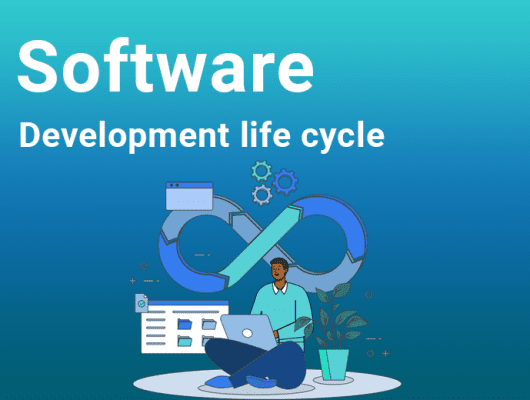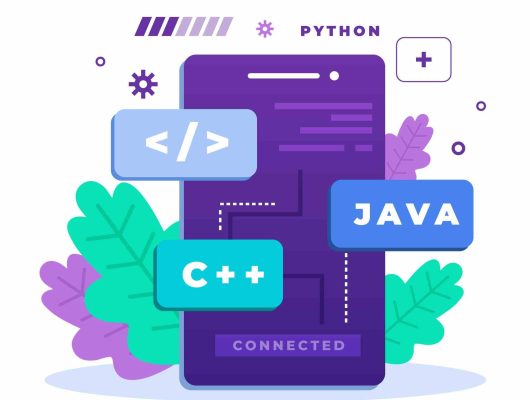
Agile vs. Waterfall: Picking the Right Method I A Comprehensive Guide
Agile and Waterfall are the two renowned software methodologies because of their unique approach to project management.
Agile is best because of its flexibility and involvement in customer feedback. Waterfall methodology, on the other hand, follows a sequential approach, which makes the project plan more structured and predictable.
This choice between techniques enables organizations to choose the best approach for their
- Project goals
- Team dynamics
- Demands of the customers
So, when deciding between Agile and Waterfall, several questions arise: How does the project scope affect the methodology? What role do team size and composition play in determining the best approach?
If you are struggling with these queries, then worry not because this article is for you. So, step with me into this guide to learn all about Agile Vs. Waterfall methodology.
Table of Contents
1. Choosing the Right Methodology: Agile Vs. Waterfall
Agile and Waterfall are the two project management approaches whose concepts and use cases differ significantly. So, before understand Agile Vs. Waterfall, let’s discuss each in detail to overcome difficulties.
1.1 Understanding Agile Methodology
Agile Development methodology uses a flexible and interactive approach that helps the team deliver their project quickly. It allows them to deal with any change and update instantly.
This strategy emphasizes teamwork, customer service, and splitting large projects into smaller ones for high-quality results. Its unique choice lets the team improve and identify the best technique to deliver top-notch work.
- Rapidly cater to unforeseen changes and revisions
- Ensures timely delivery of functional products
- Ensures greater productivity of the team
- Help in identifying regular project issues
- Lack of Detailed project documentation
- Users need help extracting accurate data, budgeting, and communicating with the team
- Lack of clear project boundaries
- Go above and beyond with the team’s efforts and resources
1.1.1. Stages of Agile Life Cycle
These are the five phases comprising the Agile Life Cycle:

a. Starting up
During the Starting phase, the team focuses on the project vision and ROI.
b. Planning
In this phase, the team gathers and formulates the plan to begin the development process.
c. Development
After finalizing the project’s requirements, the team works together to begin the development. Remember that several cycles are necessary to complete a high-quality, functional project.
d. Deployment
After the completion of product development comes the deployment of projects. It also involves fixing bugs or any malfunction that arises within your product.
e. Updating
During the final stage, the product undergoes an update to a newer version after minor software changes.
1.2. Understanding Waterfall Methodology
The waterfall approach is an ideal sequential, linear approach for projects with a well-defined scope. It requires extensive pre-planning to keep the project on track and resolve issues quickly.
- Simple to use
- Users do not need specialized training while using it
- Beneficial for small projects
- Ensure effortless monitoring of project development
- Not suitable for a large project
- Slow time to the market
1.2.1. Steps of Waterfall Methodology

Typically, five project management stages (or phases) comprise the Waterfall model, such as
a. Requirements Collection
The initial phase of this methodology involves understanding and documenting the project requirements.
b. Structure Design
The second phase of the waterfall methodology is analyzing and following the requirements of product development. This model makes it easier to plan the design of the whole system.
c. The Execution
This phase is about creating minor programmers using the predefined requirement.
d. Testing and Integration
After the development and execution of the product, users test the whole system to identify errors or flaws.
e. Deployment
Upon finishing functional and non-functional testing, users implement the project in the customer or market environment.
f. Maintenance
Here comes the last stage, which involves continuous maintenance and updates based on customer satisfaction.
2. Agile Vs. Waterfall: Key Differences
After reading both methodologies, you might get an idea about what they are and how they work. But before you choose one, consider it necessary to examine side-by-side comparisons:
2.1. Flexibility
It is essential to use agile project management because it has a flexible nature that allows last-minute changes. Waterfall, on the other hand, stands out because it has stable and straightforward processes.
2.2. Customer Involvement
The agile technique encourages client engagement throughout the project, while the Waterfall restricts it to the beginning.
2.3. Testing
In Waterfall, testing happens after development, whereas in agile, it occurs throughout the development process.
2.4. Risk management
The iterative nature of Agile project management enables timely detection and removal of problems. In contrast, Waterfall only identifies issues during the testing phase.
2.5. Roles
The role of Waterfall is to assign clear roles to each team member, along with their duties and responsibilities. In contrast, agile models allow the team members to collaborate on various project aspects collectively.
2.6. Planning
In Waterfall, planning is the most linear process on which the entire project depends. It involves a detailed discussion of the project requirements and objectives. However, the agile method is a continuous process involving new information or adjusting to the previous standard.
2.7. Time Duration
Waterfall projects take longer to launch than agile initiatives due to the iterative development cycles at the beginning.
2.8. Documentation
Agile focuses on self-organizing teams and working together, and it only needs a small documentation. While, Waterfall ensures the proper documentation of every step.
2.9. Team Involvement
Agile puts a lot of weight on informal contact, which means that people or small groups of people often talk to each other. However, for Waterfall, formal communication plans and success reports are necessary to involve the stakeholders.
3. Selecting the Appropriate Framework for Your Business: Agile Vs. Waterfall
Knowing the differences between these frameworks does not enable you to conclude which is the best. So, consider these factors that will assist you in refining your decision.
3.1. Assess Your Project Requirements And Team Dynamics
Properly understand the requirements of your project because it helps you select the suitable model. Apart from that, consider the expertise your team possesses with the methodologies.
Agile works well for teams that are capable of executing their task in changing environments.
On the other hand, Waterfall might work best for teams that like a structured, linear process and clear objectives.
3.2. Consider budget, schedule, and scope
Time, budget, and scope comprise the project management unity, which substantially impacts the decision between Agile and Waterfall.
Agile approaches allow for greater flexibility in dealing with these limitations, which often leads to a
- Shorter time-to-market
- Development of a minimum viable product (MVP).
On the other hand, projects with a fixed scope and budget benefit more from the waterfall approach.
Find out more about Step by Step guide to Mobile App Development
3.3. Align with customer requirements and business objectives.
While choosing the appropriate framework, make sure that it aligns with the organization and the clients.
Note that an agile approach is beneficial if the product depends upon the customer and the client’s feedback. For a project with a phase-specific plan, the waterfall method is ideal.
Wrapping Up
To sum up, Agile and Waterfall are two different ways of managing projects that work best for various types of tasks. Waterfall may be best if project goals are clear from the start. Agile suits fast-moving, direction-changing teams that are still determining the ultimate product. But if you are still unable to figure Agile Vs. Waterfall, get the help of the expert.
For it, consider Onyxtec. Its team has a strong command of both methodologies, resulting in the creation of user-friendly software products.
FAQ
Is it possible to integrate Agile and Waterfall methodologies?
Yes, you can use Agile and Waterfall methodologies together. However, the development phase relies on whether SDLC is collaborative or not.
Many teams utilize waterfall methods for requirements and design and Agile techniques for development.
Why did Agile decline Waterfall?
During the waterfall approach, developers can only find bugs during the testing phase. It does not allow the developer to test the product before and after this phase.
As a result, many foreign groups began testing different types of software programs.
In 2001, members of the models signed on to a “Agile Manifesto” that had twelve principles and four values. By following these principles, users streamlined software development and focused functional software over extensive documentation.
Can I use a hybrid approach to use Agile and waterfall methodologies?
Even though Agile and Waterfall are different from each other, a hybrid strategy can help teams succeed.
Most of the time, the team used Waterfall to plan the project properly and used the agile method for project development.




